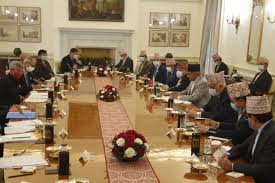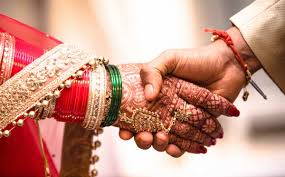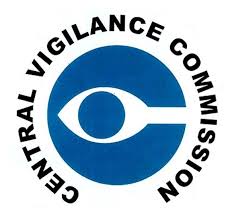today Current Affairs: 19th January 2021 for UPSC IAS exams, State PSC exams, SSC CGL, State SSC, RRB, Railways, Banking Exam & IBPS, etc
Table of Contents
Contents:
- India-Nepal Joint Commission Meet
- Age of marriage for women:
- Central Vigilance Commission (CVC):
- Rooftop Solar Scheme:
- CrowdFunding:
- Limited Liability Partnership (LLP):
- GI tag sought for India’s costliest mushroom:
- Other important current affairs
1.India-Nepal Joint Commission Meet:

The 6th India-Nepal Joint Commission meeting was held where in Nepal raised the Kalapani boundary dispute with India.
- The two sides also discussed cooperation in a range of areas, including power, oil and gas, water resources, capacity building and tourism among others.
- India distanced itself from discussing the matter at the Joint Commission level as there is a dedicated Foreign Secretary-level mechanism to discuss boundary disputes.
Key Points:
- Nepal’s requirement for vaccines to fight the Covid-19 pandemic was discussed as it has approved Serum Institute of India’s (SII) Covishield vaccine.
- Both the delegations reviewed the development partnership and discussed the benefit of the Integrated Check Posts (ICP) at Birgunj and Biratnagar (Nepal).
- The Posts have helped in seamless movement of people and trade between the two countries.
- Third and Fourth ICP at Nepalgunj and Bhairahawa respectively to be started.
- India to build two cultural heritage projects in Nepal on the ‘Pashupatinath Riverfront Development’ and the ‘Bhandarkhal Garden Restoration in Patan Durbar’ through grant assistance.
- Nepal’s Foreign Minister also delivered a speech in Indian Council of World Affairs (ICWA).
- The Indian Council of World Affairs was established in 1943 as a think tank.
- It is devoted exclusively for the study of international relations and foreign affairs.
- The Vice President of India is the ex-officio President of ICWA.
2.Age of marriage for women:

- Taskforce on marriage age submits a report to PMO:
- The task force was set up to take a re-look at the age of marriage for women has submitted its report to the Prime Minister’s Office and the Ministry of Women and Child Development.
- It was headed by Jaya Jaitley.
- Finance Minister Nirmala Sitharaman in her Budget speech last year proposed a panel on the “age of a girl entering motherhood” to lower maternal mortality rates and improve nutrition levels.
- But when the decision to appoint a task force was announced, its terms of reference included examining “the correlation of age of marriage and motherhood” with health and nutritional status of mothers and infants.
Criticism:
- Women’s rights activists have opposed the suggestion of raising the age of marriage from 18 to 21 for women and have cited evidence to show that such a move may be used to incarcerate young adults marrying without parents’ consent.
- Currently, the law prescribes that the minimum age of marriage is 21 and 18 years for men and women, respectively.
- The minimum age of marriage is distinct from the age of majority, which is gender-neutral.
- An individual attains the age of majority at 18 as per the Indian Majority Act, 1875.
- For Hindus, Section 5(iii) of the Hindu Marriage Act, 1955 sets 18 years as the minimum age for the bride and 21 years as the minimum age for the groom.
- Child marriages are not illegal but can be declared void at the request of the minor in the marriage.
- In Islam, the marriage of a minor who has attained puberty is considered valid under personal law.
- The Special Marriage Act, 1954 and the Prohibition of Child Marriage Act, 2006 also prescribe 18 and 21 years as the minimum age of consent for marriage for women and men respectively.
From bringing in gender-neutrality to reduce the risks of early pregnancy among women, there are many arguments in favour of increasing the minimum age of marriage of women.
- Early pregnancy is associated with increased child mortality rates and affects the health of the mother.
- Despite laws mandating minimum age and criminalizing sexual intercourse with a minor, child marriages are very prevalent in the country.
- Also, according to a study, children born to adolescent mothers (10-19 years) were 5 percentage points more likely to be stunted (shorter for their age) than those born to young adults (20-24 years).
3.Central Vigilance Commission (CVC):

The Central Vigilance Commission (CVC) has recently directed all Ministries/Departments of the Union government to strictly adhere to the time limits for various stages of disciplinary proceedings in vigilance cases since delays were causing undue advantage or harassment to the charged officials.
- The CVC has earlier also expressed concerns that despite clear guidelines issued by the CVC and the Department of Personnel & Training, investigators were not adhering to the prescribed time limit, resulting in investigations taking a much longer time.
- The Supreme Court has also ordered for limiting the period of stay granted by a court of law to six months, barring exceptional cases.
Reasons for Pendency:
- Stay granted by a court of law
- Case pending in a court of law
- Case kept in abeyance since official had been terminated from service
Impact:
- Set’s Poor Precedent:
- The undue delay provided prolonged opportunities to a corrupt public servant to indulge in inappropriate activities.
- Disincentives honest officials:
- Any delay in the conclusion of vigilance related matters is detrimental for an honest public servant, who may have got involved in a vigilance case.
Central Vigilance Commission (CVC)
- Central Vigilance Commission is the apex vigilance institution, free of control from any executive authority, monitoring all vigilance activity under the Central Government and advising various authorities in Central Government organizations in planning, executing, reviewing and reforming their vigilance work.
- The CVC was set up by the Government in 1964 on the recommendations of the Committee headed by Shri K. Santhanam.
- In 2003, the Parliament enacted CVC Act conferring statutory status on the CVC.
- Functions: The CVC receives complaints on corruption or misuse of office and to recommend appropriate action.
- Following institutions, bodies, or a person can approach to CVC:
- Central government
- Lokpal
- Whistle blowers
- It is not an investigating agency.
- The CVC either gets the investigation done through the Central Bureau of Investigation or through Chief Vigilance Officers (CVO) in government offices.
- The Central Vigilance Commission has its own Secretariat, Chief Technical Examiners’ Wing (CTE) and a wing of Commissioners for Departmental Inquiries (CDI).
- For investigation work, CVC has to depend on two external sources CBI and Chief Vigilance Officers (CVO).
4.Rooftop Solar Scheme:

The Ministry of New and Renewable Energy (MNRE) has released an advisory on the rooftop solar scheme.
- The aim is to generate solar power by installing solar panels on the roof of the houses, the Ministry of New and Renewable Energy is implementing a Grid-connected Rooftop Solar Scheme (Phase II).
Grid-Connected Rooftop Solar Scheme (Phase II):
- It aims to achieve a cumulative capacity of 40,000 MW from Rooftop Solar Projects by the year 2022.
- In a grid-connected rooftop or small Solar Photovoltaic (SPV) system wherein the DC power generated from the SPV panel is converted to AC power using the power conditioning unit and is fed to the grid.
- The major objective of the program includes:
- To promote the grid-connected SPV rooftop and small SPV power generating plants among the residential, community, institutional, industrial and commercial establishments.
- To mitigate the dependence on fossil fuel-based electricity generation and encourage environment-friendly Solar electricity generation.
- To create an enabling environment for investment in the solar energy sector by the private sector, state government and the individuals.
- To create an enabling environment for the supply of solar power from rooftop and small plants to the grid.
- This scheme is being implemented in the state by distribution companies (DISCOMs).
- Under this scheme the Ministry is providing a 40% subsidy for the first 3 kW and 20% subsidy beyond 3 kW and upto 10 kW of solar panel capacity.
- The residential consumer has to pay the cost of rooftop solar plant by reducing the subsidy amount given by the Ministry as per the prescribed rate to the vendor.
5.CrowdFunding:

The Delhi High Court has ordered the Ministry of Health and Family Welfare to explore Crowdfunding to help two children, who are suffering from a Rare Disease known as Duchenne Muscular Dystrophy.
- The HC held that ‘Right to Health and Healthcare’ is a fundamental right which has been recognised by the Supreme Court to be a part of the ‘Right to life’ under Article 21 of the Constitution.
Direction to the Society and Authorities:
- The High Court directed the society in general and authorities in particular to ensure that the life of such children is not compromised, even if there is a small window of improving their chances of survival or even providing a better quality of life.
- Directed the Ministry of Health and Family Welfare to give a specific timeline in respect of the finalisation and notification of the Draft Health Policy for Rare Diseases, 2020.
- The draft policy has a section where the government proposed crowdfunding for treatment of high-cost Rare Diseases.
CrowdFunding:
- Crowdfunding is a method of raising capital through the collective effort of a large number of individual investors.
- This approach taps into the collective efforts of a large pool of individuals, primarily online via social media and crowdfunding platforms and leverages their networks for greater reach and exposure.
- Types:
- Donation-Based Crowdfunding: Donation-based crowdfunding is a way to source money for a project by asking a large number of contributors to individually donate a small amount to it.
- In return, the backers may receive token rewards that increase in prestige as the size of the donation increases. For the smallest sums, however, the funder may receive nothing at all.
- Donation-Based Crowdfunding: Donation-based crowdfunding is a way to source money for a project by asking a large number of contributors to individually donate a small amount to it.
- Rewards-Based Crowdfunding: Rewards-based crowdfunding involves individuals contributing to a business in exchange for a “reward,” typically a form of the product or service which company offers.
- Even though this method offers backers a reward, it’s still generally considered a subset of donation-based crowdfunding since there is no financial or equity return.
- Equity-Based Crowdfunding: Unlike the donation-based and rewards-based methods, equity-based crowdfunding allows contributors to become part-owners of the company by trading capital for equity shares.
- As equity owners, the contributors receive a financial return on their investment and ultimately receive a share of the profits in the form of a dividend or distribution.
6.Limited Liability Partnership (LLP):

Govt. to amend LLP Act to spur ease of business.
- Decriminalizing various offences and permitting LLPs to issue non-convertible debentures are among the changes being proposed under the Limited Liability Partnership (LLP) Act.
An LLP:
- A Limited Liability Partnership (LLP) is a partnership in which some or all partners have limited liability.
- It therefore exhibits elements of partnerships and corporations.
- In an LLP, one partner is not responsible or liable for another partner’s misconduct or negligence.
- An LLP is a body corporate and legal entity separate from its partners. It has perpetual succession.
- Being the separate legislation (i.e. LLP Act, 2008), the provisions of Indian Partnership Act, 1932 are not applicable to an LLP and it is regulated by the contractual agreement between the partners.
- Every Limited Liability Partnership shall use the words “Limited Liability Partnership” or its acronym “LLP” as the last words of its name.
- Composition:
- Every LLP shall have at least two designated partners being individuals, at least one of them being resident in India and all the partners shall be the agent of the Limited Liability Partnership but not of other partners.
- LLP format is an alternative corporate business vehicle that provides the benefits of limited liability of a company but allows its members the flexibility of organizing their internal management on the basis of a mutually arrived agreement, as is the case in a partnership firm.
- This format would be quite useful for small and medium enterprises in general and for the enterprises in services sector in particular.
- Internationally, LLPs are the preferred vehicle of business particularly for service industry or for activities involving professionals.
7.GI tag sought for India’s costliest mushroom:

A geographical indication (GI) tag has been sought for one of the costliest mushrooms in the world that grows in Jammu and Kashmir’s Doda district.
- Locally called Gucchi, or Morel, the mushroom, priced at over ₹20,000 a kg, is a forest produce collected by local farmers and tribals.
- It is said to have medicinal and anti-inflammatory properties.
- It is found in temperate forests.
About GI tag:
- A GI is primarily an agricultural, natural or a manufactured product (handicrafts and industrial goods) originating from a definite geographical territory.
- Typically, such a name conveys an assurance of quality and distinctiveness, which is essentially attributable to the place of its origin.
- Once the GI protection is granted, no other producer can misuse the name to market similar products. It also provides comfort to customers about the authenticity of that product.
- Any association of persons, producers, organisation or authority established by or under the law can be a registered proprietor.
- Their name should be entered in the Register of Geographical Indication as registered proprietor for the Geographical Indication applied for.
- The registration of a geographical indication is valid for a period of 10 years.
- It can be renewed from time to time for further period of 10 years each.
- In India, Geographical Indications registration is administered by the Geographical Indications of Goods (Registration and Protection) Act, 1999 which came into force with effect from September 2003.
- The first product in India to be accorded with GI tag was Darjeeling tea in the year 2004-05.
Other important current affairs:
1.The Government of Srilanka decided to rebuild a demolished memorial at Jaffna University after the High Commissioner of India’s concerns.
- The demolition of a memorial paying tribute to Tamil civilians killed during the civil war between LTTE and the Sri Lankan Army in 2009 has brought attention to unaddressed issues of minority rights of Tamilians in Srilanka again in the India-Srilanka relations.
- Issues of Tamilians in Srilanka:
- Denial of Citizenship: The problem of the Srilankan Tamils began earlier than the 1950s. After independence in 1948 the Srilankan government felt that the Tamils were not Srilankan because they had Indian ancestry.
- The majority of the Tamils were denied Srilankan citizenship due to which most of the Tamils continued to live in poverty in the tea estates of Srilanka.
- Linguistic Discrimination: The conflict between Sinhalese and Tamils in Sri Lanka started in 1956 when Sinhala was made the official language by the country’s President and large scale discrimination began against the Tamils.
- Religious Discrimination: The discrimination against the Tamil population continued throughout the 1960s as Buddhism was given the primary place in the state and the number of Tamils employed by the state and admitted into institutions of higher learning was greatly restricted.
- Intensified Movements: During this period the Tamils responded to their oppression largely through a political and a non-violent protest movement. In the 1970s, however, there was an increased trend towards Tamil separatism and militancy that gave rise to a terrorist organization called LTTE.
2.Reserve Bank of India (RBI) Governor has agreed to look at a proposal for creating a Bad Bank.
- A bad bank conveys the impression that it will function as a bank but has bad assets to start with.
- Technically, a bad bank is an Asset Reconstruction Company (ARC) or an Asset Management Company (AMC) that takes over the bad loans of commercial banks, manages them and finally recovers the money over a period of time.
- The bad bank is not involved in lending and taking deposits, but helps commercial banks clean up their balance sheets and resolve bad loans.
- The takeover of bad loans is normally below the book value of the loan and the bad bank tries to recover as much as possible subsequently.
- US-based Mellon Bank created the first bad bank in 1988, after which the concept has been implemented in other countries including Sweden, Finland, France and Germany.
- The Troubled Asset Relief Programme (TARP) in the US.
- In Ireland, the National Asset Management Agency was established in 2009 to respond to the financial crisis.
3.The Initial Public Offering (IPO) of Indian Railway Finance Corporation (IRFC) got 65% subscription on the first day of bidding.
- Earlier, Indian Railway Catering and Tourism Corporation Ltd. held an IPO on the National Stock Exchange in 2019.
- It is the first IPO in the calendar year 2021 and the first public issue by a railway non-banking financial company.
- Through the initial public offer, the Centre, the promoter of IRFC, will offload 13.6% stake in the company.
- At the higher price band of Rs 26 per share, the government would raise Rs 3,243 crore and the company will have a market cap of Rs 23,845 crore.
- IRFC will use the IPO proceeds from the fresh issue to boost its capital base and general corporate purposes.
4.The Ministry of Development of North-East Region has recently given an update on the scheme North East Venture Fund.
- Set up by North Eastern Development Finance Corporation Limited (NEDFi) in association with the Ministry of Development of North Eastern Region (M-DoNER), the North East Venture Fund scheme was launched in September 2017.
- It is the first dedicated venture capital fund for the North Eastern Region (NER).
- Venture capital is a form of private equity and a type of financing that investors provide to startup companies and small businesses that are believed to have long-term growth potential. Venture capital generally comes from well-off investors, investment banks and any other financial institutions.
- Corpus Amount: Capital commitment of Rs 100 crore.
- Objectives:To contribute to the entrepreneurship development of the NER and achieve attractive risk-adjusted returns through long term capital appreciation by way of investments in privately negotiated equity/ equity related investments.
5.The Supreme Court has asked Attorney General K.K. Venugopal to compile the various issues being raised by States with regard to the application of a Constitution Bench judgment of 2006 in M. Nagaraj case.
- The court in M. Nagaraj case had upheld the application of creamy layer principle to members of the Scheduled Caste/Scheduled Tribe communities in promotions.
- Nagaraj Case: On June 17, 1995, Parliament, acting in its constituent capacity, adopted the seventy-seventh amendment by which clause (4A) was inserted into Article 16 to enable reservation to be made in promotion for SCs and STs.
- The validity of the seventy-seventh and eighty-fifth amendments to the Constitution and of the legislation enacted in pursuance of those amendments was challenged before the Supreme Court in the Nagaraj case.
- Upholding the validity of Article 16 (4A), the court then said that it is an enabling provision.
- “The State is not bound to make a reservation for the SCs and STs in promotions.
- But, if it seeks to do so, it must collect quantifiable data on three facets — the backwardness of the class; the inadequacy of the representation of that class in public employment; and the general efficiency of service as mandated by Article 335 would not be affected”.
- The court ruled that the constitutional amendments do not abrogate the fundamentals of equality.
6.Desert Knight-21:
- It is a bilateral Air exercise held between Indian Air Force and French Air and Space Force
- The latest edition will be held at Air Force Station Jodhpur.
7.Rakshita:
- It is a bike-based casualty transport emergency vehicle.
- Institute of Nuclear Medicine and Allied Sciences (INMAS), Delhi based DRDO laboratory, handed over Rakshita to Central Reserve Police Force (CRPF).
- The bike ambulance will help in overcoming the problems faced by Indian security forces and emergency healthcare providers.
8.Tsari Chu river:
- A satellite image shows China built new village in Arunachal.
- The settlements are situated on the banks of Tsari Chu river in Upper Subansiri district of Arunachal.
- The village lies south of the McMahon Line. The McMahon Line demarcates between Tibet and India’s Northeast, which is disputed by China.




